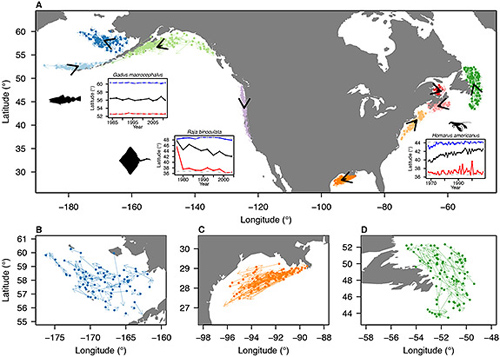
The researchers found a “complex mosaic” of climate velocity and species movement in nine areas central to North American fishing industries (above from left to right): the Aleutian Islands (light blue); the eastern Bering Sea (blue); the Gulf of Alaska (light green); the West Coast (purple); the Gulf Coast (orange); the Northeast (peach); Nova Scotia (pink); the southern Gulf of St. Lawrence (red); and Newfoundland (green). The insets (image A) show shifts in the maximum (blue), average (black) and minimum (red) latitude during the period studied for Pacific cod in the Gulf of Alaska, big skate on the West Coast and American lobster in the Northeast. The close-ups of the Eastern Bering Sea (B), the Gulf Coast (C) and Newfoundland (D) show the nuances of regional animal movements that global-scale models often miss. (Image by Science/AAAS)
